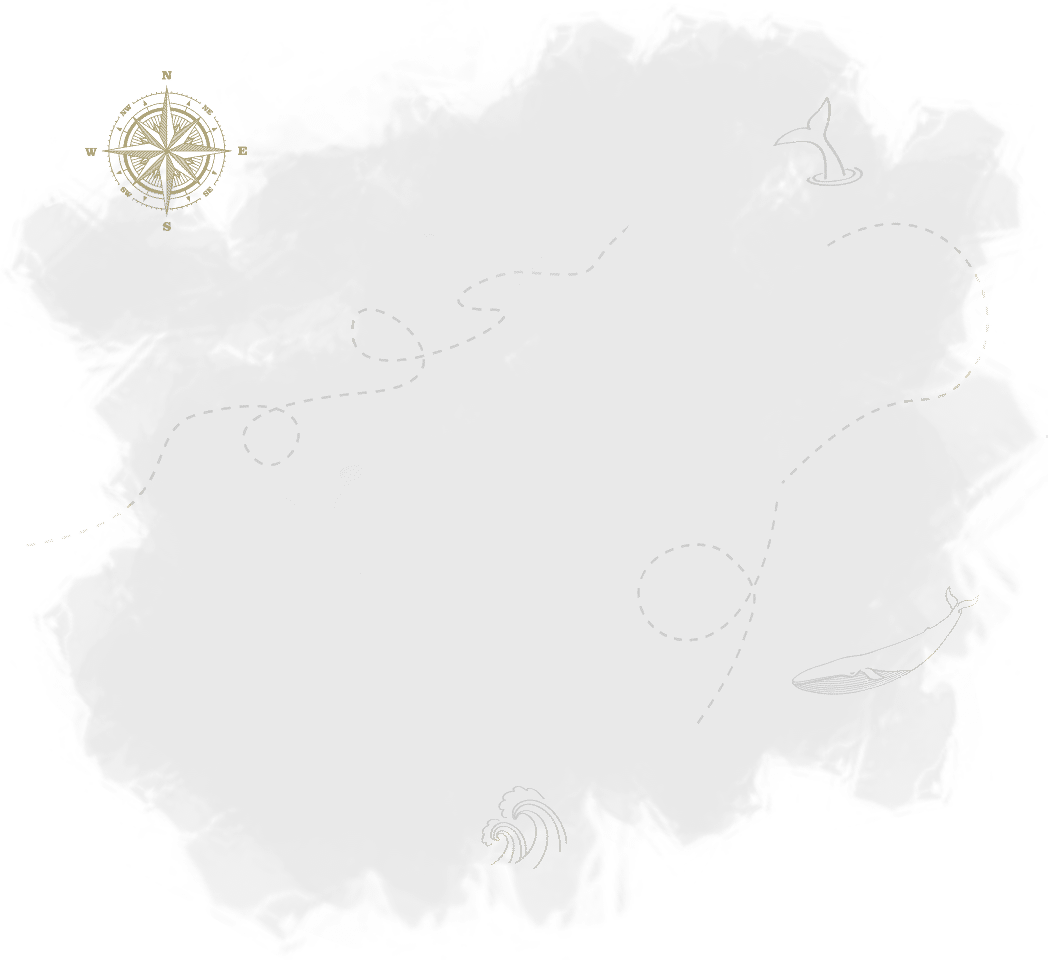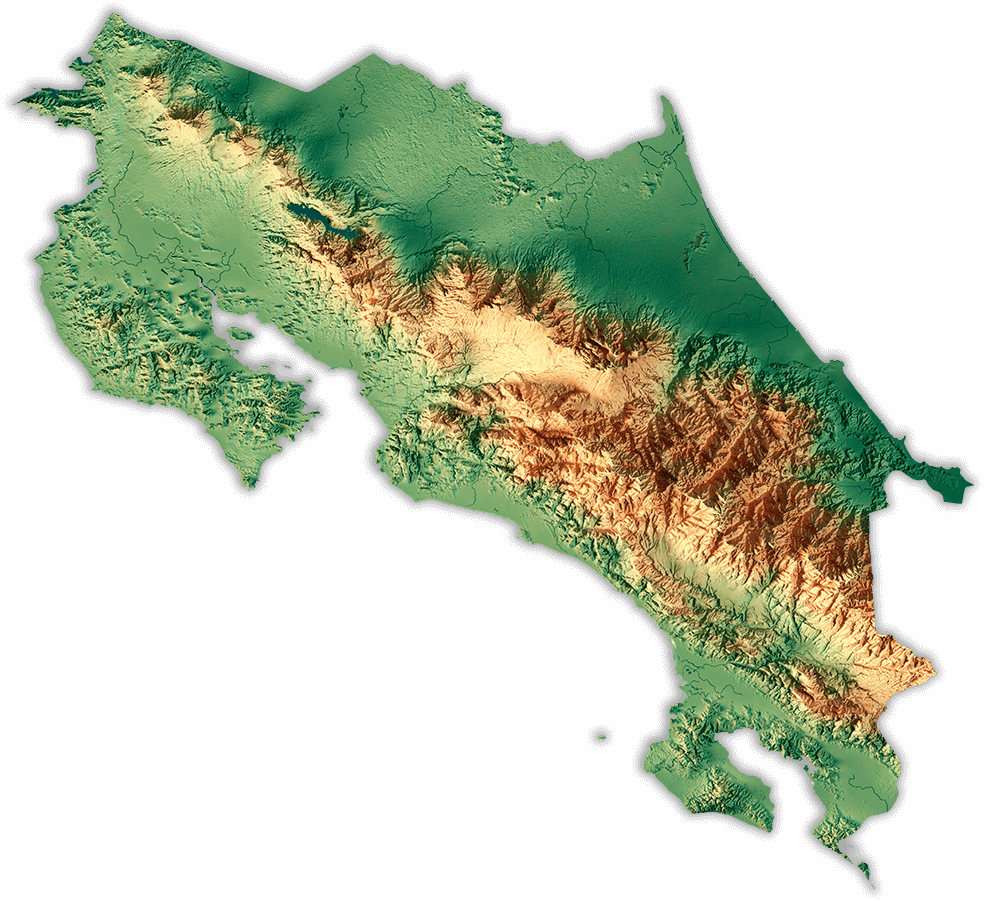save nature - create resources
Country & People
the country between two seas
Costa Rica
With its neighbors Nicaragua, Guatemala, Honduras, Belize and El Salvador in the north and Panama in the south, Costa Rica forms the biological corridor between North and South America. Called the “Rich Coast” by the Spanish, Costa Rica is the third smallest country in Central America after Belize and El Salvador, but offers some superlatives in its 51060 km2 area.
Guanacaste, the province in Costa Rica’s northwest with the most national parks in the country thus has five different vegetation zones in a stretch of only 40km starting with the ecosystem of sand and rocky coasts on the Pacific Ocean, followed by a steppe landscape, tropical dry forest, the premontane rainforest up to the cloud forest on the peaks of the volcanic Cordilleras. On the Caribbean side, the forested slopes of this imposing mountain landscape then merge into a vast plain covered with rainforest, which is characterized by extensive wetlands in the northern part.
The more than 100 active and extinct volcanoes of the country have created breathtakingly beautiful landscapes along the Pacific fire belt during their formation, almost all of which are located in the numerous national parks and constitute the enormous tourist attraction of Costa Rica.
The country in its biological diversity was created by the meeting of two tectonic plates, the Cocos and the Caribbean plate, which formed the land bridge about 2.7 million years ago and allowed the exchange of flora and fauna in both directions.
Popular with vacationers and dropouts, the Nicoya Peninsula represents one of the five internationally recognized Blue Zones, places of longevity for its inhabitants, many of whom live to be over 100 years old, known as centenarios, along with Okinawa, Sardinia, Icaria in Greece and Loma Linda in California.
The Nicoya mountain range, together with the mountains around Jacó on the Central Pacific, as well as the Talamanca chain, are geologically the oldest part of the isthmus.
The Pacific Fire Belt, which stretches along the western coasts of the Americas from Alaska in the north to South America, is characterized in Costa Rica by nine notable volcanoes and also forms the watershed of the country with very differentiated fauna and flora on both sides. While the Atlantic side in the east is characterized by rainforests due to the humid trade winds constantly blowing from the northeast, precipitation is lower on the Pacific side, especially in the northwest, a region with the most sunny days per year.
In the Pacific southwest of Costa Rica, on the other hand, the trade winds rising with Atlantic moisture into the Talamanca Mountains, the highest elevation of the isthmus, which rise over 3800m, and cool rapidly, generate downdrafts down to the Pacific, which then bring the Pacific moisture in rotation mode, in turn, back to the coast, where it rains down. The special geographic conditions thus create in the southwest of the country the phenomenon of tropical rainforest, rare for western coasts of the Americas. Here two climatic worlds meet, which has led to an extremely high biodiversity, especially on the Osa Peninsula.


Total
Reforestation
Water
San José is the capital and largest city of Costa Rica, and the capital of the province of the same name. It is in the center of the country, in the mid-west of the Central Valley, within San José Canton.
Elevation: 1,172 m
Population: 339,581 (2017)
the poster child for sustainability
Costa Rica
Among its neighbors, Costa Rica offers the most climatic diversity for the visitor. The weather, due to the mountainous topography around the 9th degree of latitude, meets the most diverse requirements and is not divided into seasons in the subtropics, but is expressed in Costa Rica on the Pacific side in a distinguished dry period that lasts from December to May and a rainy period from June to November, while the Caribbean side of Costa Rica is blessed with a consistently higher humidity throughout the year.
Because of its location around the 9th parallel, the country has pleasant temperatures throughout the year, and the only differences are in the altitudes. The lowlands are warm to hot on both the Atlantic and Pacific sides, while in the mountains there are temperatures that justify the predicate of “eternal spring”. At the heights of the Talamanca Mountains, temperatures often drop to zero.
The history of the country is divided between the indigenous cultures that developed in the region 10,000 years ago and the era of the Spanish conquests up to modern times.
Costa Rica was hastily called the “rich coast” by the Spaniards in the hope of finding a lot of gold, but unfortunately there were no significant finds of the precious metal. The country was even considered a “green hell” and served the Spanish conquerors in the Caribbean coastal area around Limon only as a stopover for the transport of South American gold on the way to the homeland.
Economically and politically, Costa Rica is often considered the “Switzerland of Latin America” because, with one exception, the country has been democratically structured since its independence from Spain in 1821, resulting in economic continuity.
the poster child for sustainability
Costa Rica
Without gold discoveries, the Spanish emigrants shifted their activities to agriculture. Coffee became the backbone of the economy at the turn of the century before last, and its prosperity financed many infrastructure projects, mainly in the Central Valley. Later, when bananas became the second mainstay of the country’s economy, a thriving socially oriented society quickly developed. Other important export products of Costa Rica in recent times are pineapple and cocoa.
Costa Rica’s development has seen a number of serious interventions in the country’s once pristine natural environment. For example, more than 100 years ago, vast areas were cleared by private landowners as part of the ‘homestead decree’, i.e. the distribution of land to the needy.
Huge oak forests, which once grew up to the heights of the volcanic cordilleras, were simply processed into charcoal by the so-called carboneros. Another wave of deforestation was caused by the cattle ranching that developed in the 1960s, which, due to the favorable weather and its positive influence on the health of the animals, was expanded mainly in the province of Guanacaste, while rice farmers in the coastal lowlands of the province also contributed their share to the deforestation.
Today, Costa Rica meets almost 100% of its energy needs from renewable sources, mainly guaranteed by hydroelectric power.
Also, through the creation of many national parks, about 25% of the country is already protected, which is unique in the world. This created a national rethinking and the country quickly took a pioneering role in global nature conservation. More and more, once relatively unproductive pasture and meadow areas have been successfully reforested through fallowing, which has been supported by the government with annual compensation payments.
Nevertheless, much remains to be done, especially at the private level. Laws prohibit the felling of native species, but in many places one still frequently encounters transports of huge tree trunks.

